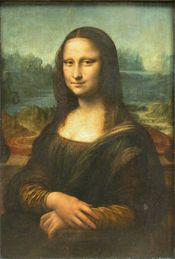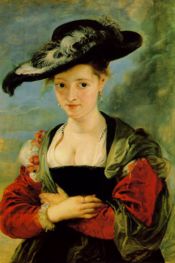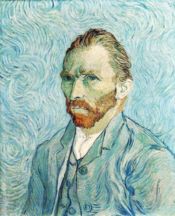Gorgeous Works Of Art
Just like the masters of yesterday, our talented professional portrait artists can transform your treasured photos into gorgeous works of art. Our unique paintings can be enjoyed for many generations.
Select
Our Portrait Galleries

Best Portraits & Oil Portrait Artists
 Almost 600 years have passed since John of Bruges and the Flemish School of painters popularized the oil painting technique. After he initiated the Flemish school of painters, the material refinement and the progress of the technique gave way to painting geniuses and to masters of the portrait in particular. Oil picture painters enjoyed special fame during those times.
Almost 600 years have passed since John of Bruges and the Flemish School of painters popularized the oil painting technique. After he initiated the Flemish school of painters, the material refinement and the progress of the technique gave way to painting geniuses and to masters of the portrait in particular. Oil picture painters enjoyed special fame during those times.
With the improvement of oil as a material for painting and before the appearance of new techniques, it was simple to move from wood to canvas. This also facilitated the work of the painter of oil paintings. Canvas was much lighter and easier to carry and became more economic. The popularization of oil painting and oil painters is also partly due to this change.
In addition to Jan van Eyck, Leonard Da Vinci is also a well-known painter from the 1400s. Representative of the high Italian Renaissance, he handled perspectives and the atmospheres of his paintings in an innovative way for the time. One of his more famous works, the “Mona Lisa”, is one of the best known oil paintings of all time. Durero is also worth mentioning for his hyper realistic style in handling light and shades and by the high level of detail of his works as an oil portrait painter. Durero also knew how to skillfully incorporate certain other techniques such as engraving and carving.
In the 16th century, we have to mention Miguel Angel, Rafael, Tiziano and Tintoretto. However, there were many other excellent oil painters in that productive century. Miguel Angel, always emulated but never equaled, was not a painter of oil paintings in the strict sense of the word. However, he is worththy of mention because of the elaborate and novel way he painted plump faces and bodies in his frescoes. Rafael depicts faces accurately and simply, and he avoids overloading his paintings with unnecessary details such as his painting “Lady with the Unicorn.” Although Tiziano’s strength was painting landscapes, he and his disciple, Tintoretto completed numerous beautiful oil portraits. Both artists displayed a magnificent mastery of light and shade. Tintoretto focused his work more on religious paintings and fresco paintings.
 Rubens was an outstanding painter of religious works and portraits in Italian baroque style for wealthy families of the 17th century. He stopped emulating Veronese and Tintoretto to achieve an excellent mastery of handling the brush which is evident in the realism of the brightness of the model’s eyes. During the same century in Spain, Velazquez devoted himself to oil paintings, portraits and landscapes, and he was recognized in Seville when he was only 21. His portraits reveal an almost photographic realism, a satin look which contrasts greatly with the heavy brushstrokes and abundance of oil displayed by his contemporary, Rembrandt. Murillo, a Spaniard like Velazquez, emphasizes luminosity in an innovative way in his paintings. This turned him into a very well respected portrait painter in English society where he obtained many loyal followers such as Reynolds and Constable.
Rubens was an outstanding painter of religious works and portraits in Italian baroque style for wealthy families of the 17th century. He stopped emulating Veronese and Tintoretto to achieve an excellent mastery of handling the brush which is evident in the realism of the brightness of the model’s eyes. During the same century in Spain, Velazquez devoted himself to oil paintings, portraits and landscapes, and he was recognized in Seville when he was only 21. His portraits reveal an almost photographic realism, a satin look which contrasts greatly with the heavy brushstrokes and abundance of oil displayed by his contemporary, Rembrandt. Murillo, a Spaniard like Velazquez, emphasizes luminosity in an innovative way in his paintings. This turned him into a very well respected portrait painter in English society where he obtained many loyal followers such as Reynolds and Constable.
Giovanni Tiepolo, a Venetian painter of the 18th century, devoted himself to frescoes and decorative religious, almost mythological oil portraits where his Baroque Post-Renaissance style is clearly evident. Recognized since youth all across Europe, nearly all of his works were custom paintings and they decorated both palaces and churches. The contrast in his colors helped him catch the attention of the pictorial market of the time.
 In the 19th century, Romanticism, Impressionism and Post-Impressionism surprise us in the hands of Delacroix, Manet, Monet, Renoir, Gauguin and Van Gogh, among others. Although still influenced by the Baroque, Delacroix depicts certain clear romantic elements in his works that contrast with the rigidity of the figures and the mysterious atmosphere of Paul Gauguin‘s paintings. The typical, well-known brushstrokes and the colorful scheme in Van Gogh’s paintings won him the recognition of all of Europe a few years after his death. His style contrasts with that of Renoir, an impressionist oil painter who depicted everyday scenes just the way a human being sees them and, sometimes as an individual’s spirit remembers them.
In the 19th century, Romanticism, Impressionism and Post-Impressionism surprise us in the hands of Delacroix, Manet, Monet, Renoir, Gauguin and Van Gogh, among others. Although still influenced by the Baroque, Delacroix depicts certain clear romantic elements in his works that contrast with the rigidity of the figures and the mysterious atmosphere of Paul Gauguin‘s paintings. The typical, well-known brushstrokes and the colorful scheme in Van Gogh’s paintings won him the recognition of all of Europe a few years after his death. His style contrasts with that of Renoir, an impressionist oil painter who depicted everyday scenes just the way a human being sees them and, sometimes as an individual’s spirit remembers them.
Pablo Picasso, Rivera and Georges Braque take a step beyond in the 20th century. They renew art interpretation and oil paintings in a very remarkable way. Picasso, who explored several styles and movements, finally enters cubism along with Georges Braque. They manage to break the classic concept of painting and explore new limits in perception and graphical representation. Rivera, a Mexican painter from the same century but with a more fugitive style, presents direct, clear pictures although profusely detailed and with very particular graphical elements. Although he painted some portraits, his career is mainly connected with murals.
Although these oil painters did not have the complete range of colors and materials of a painter in modern times, they created their own particular colors that are often inimitable at the present time. They knew how to overcome their difficulties to achieve perfection. Each one of the artists mentioned, as well as many others artists helped oil paintings and portraits evolve to what they are today. On the technical side, they forced oil painting technique, colors & mediums to evolve so that they could effectively represent their vision on how a painting or portrait should represent the painted subject. This is another great achievement of these artists that goes beyond the possible emotional value that each one of their paintings can evoke. These artists learned from the study of the artists who preceded them, and they also profited greatly from the technical advances of these extraordinary artists.












